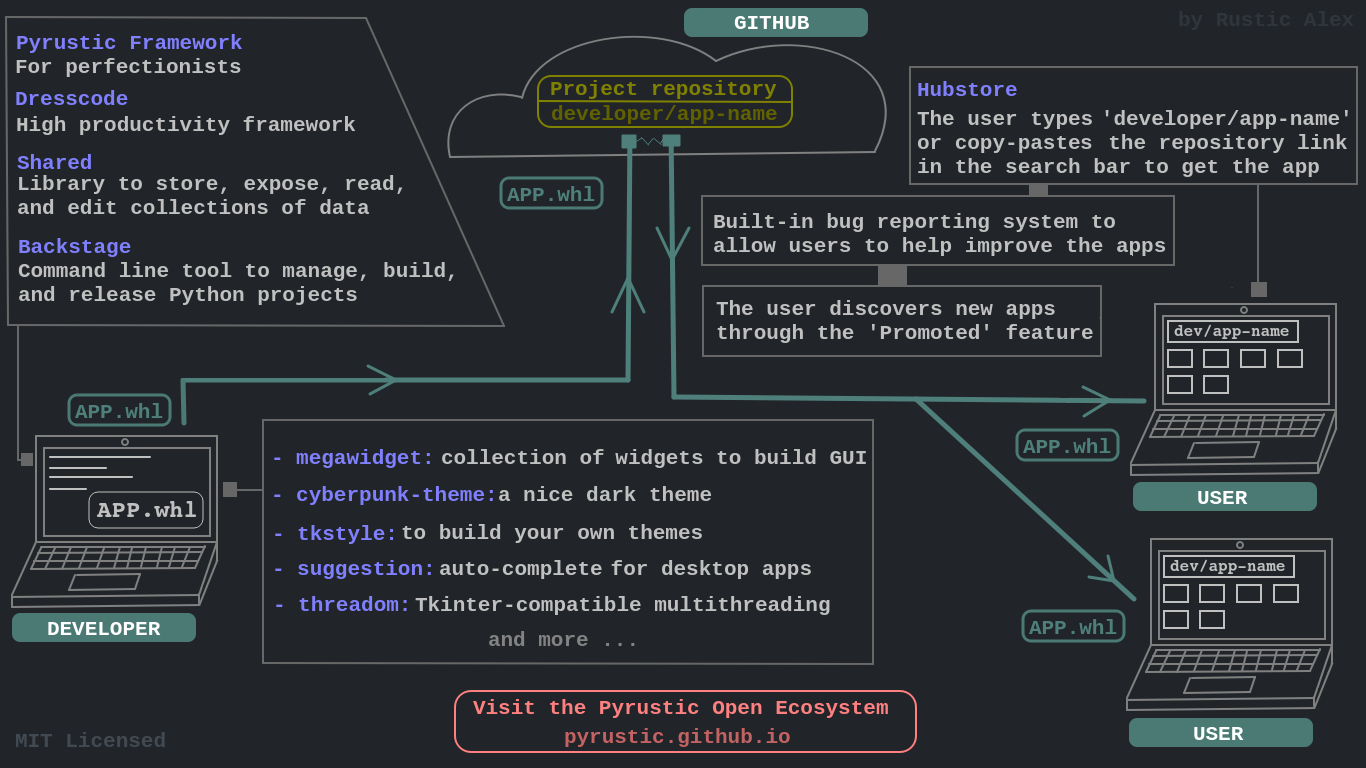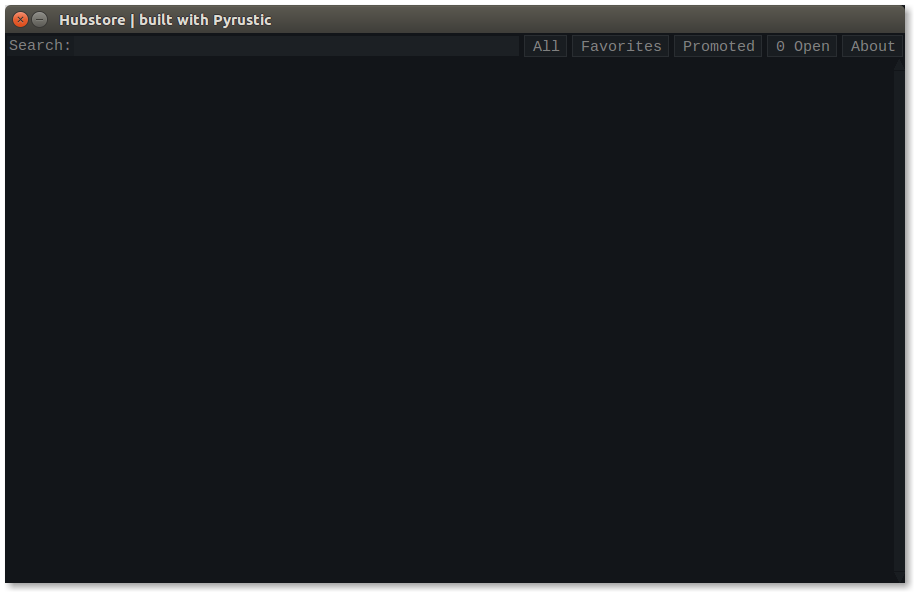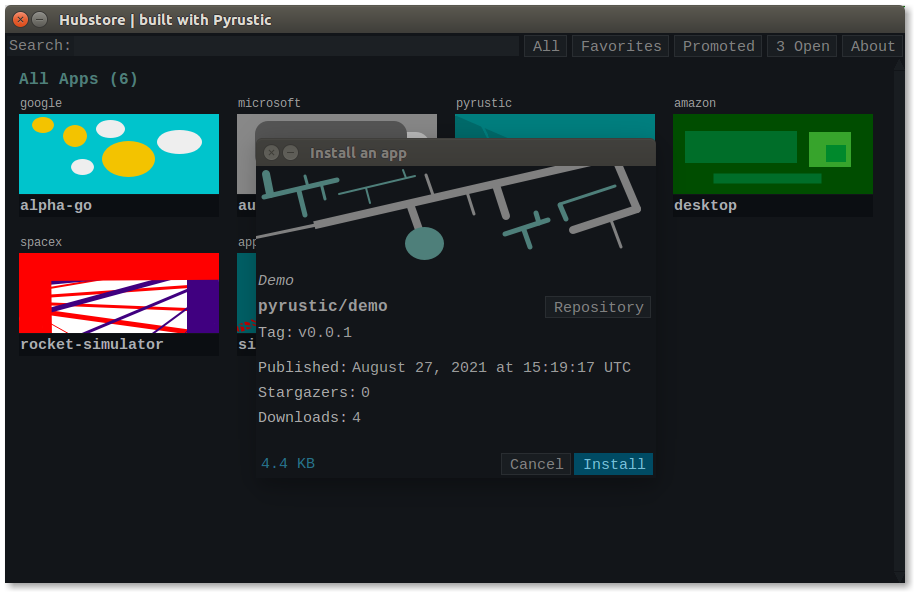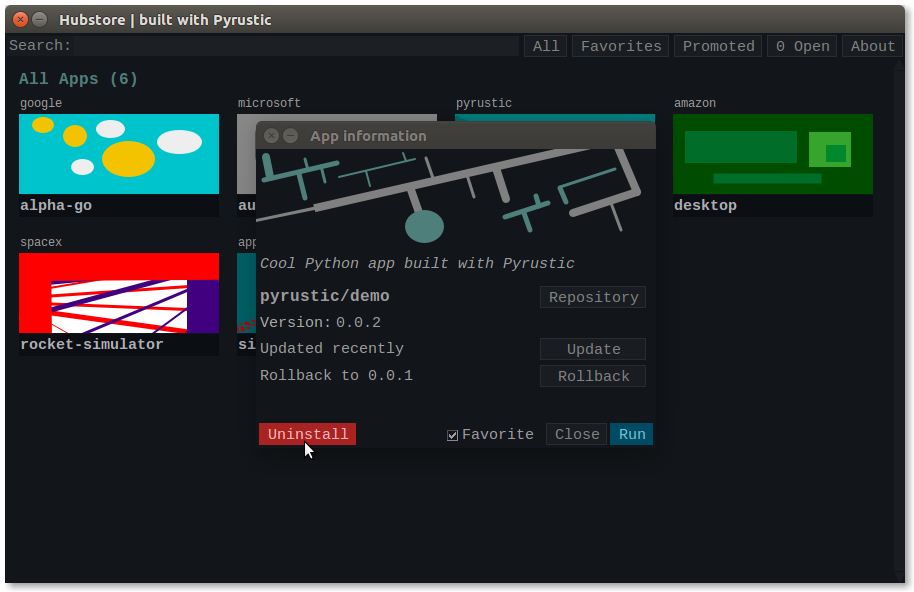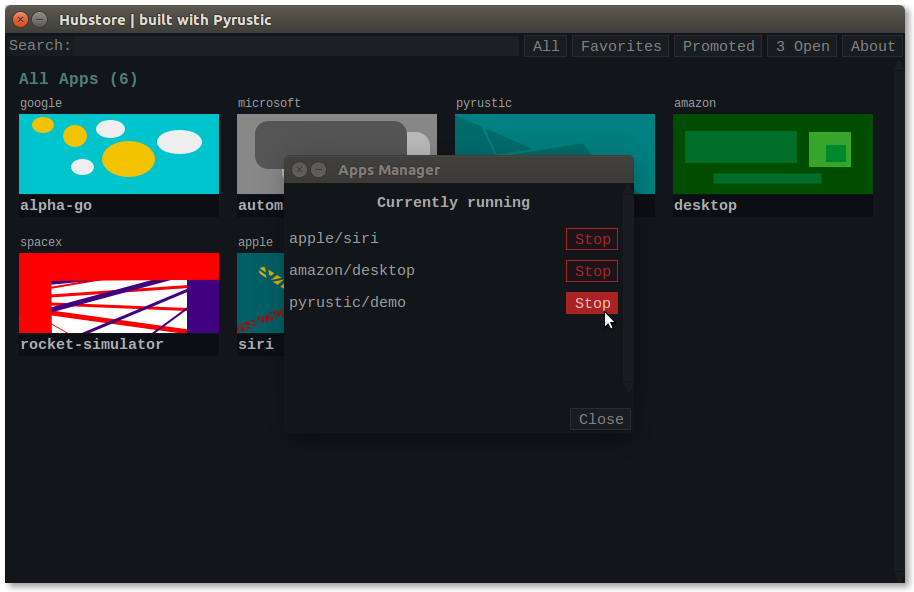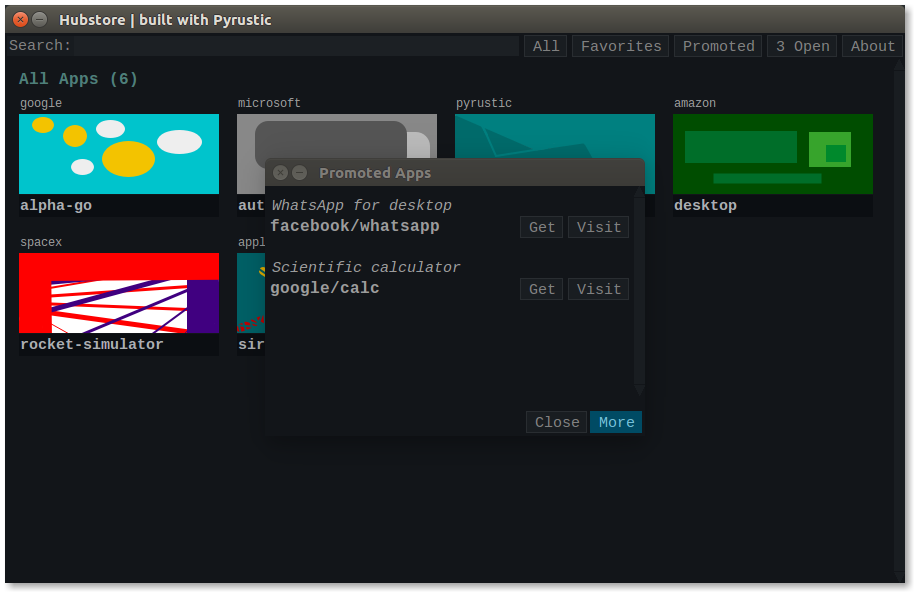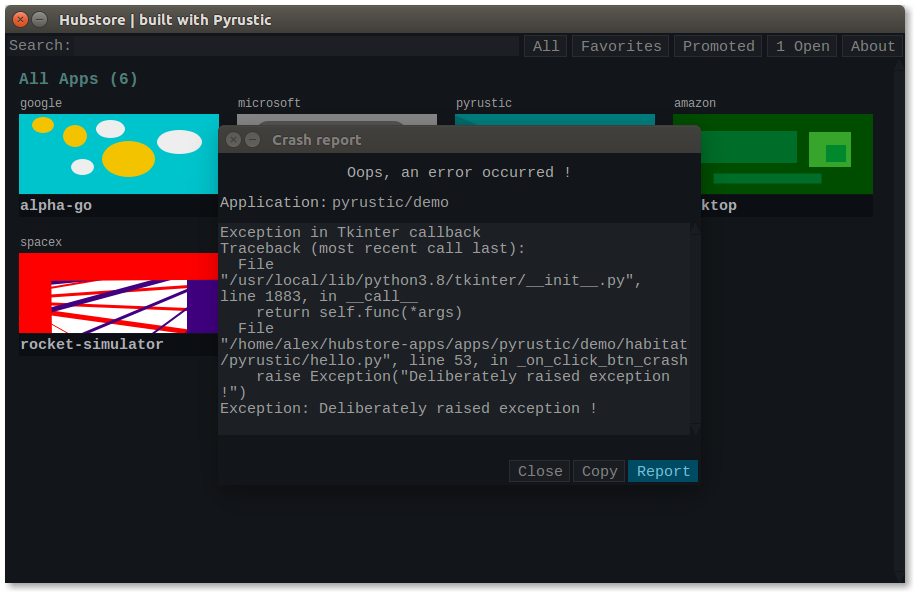Hubstore is built with the TkF Framework. But since Gaspium Framework outperforms TkF, Hubstore should be refactored to work with Gaspium
Work in progress... (new version in April)
Distribute, promote, discover, install, and run Python desktop applications
This project is part of the Pyrustic Open Ecosystem.
Installation | User side | Developer side | Demo
Hubstore allows software developers to distribute their apps to users through Github.
Let's visit both sides of the distribution pipeline.
Let's discover Hubstore through a series of screenshots
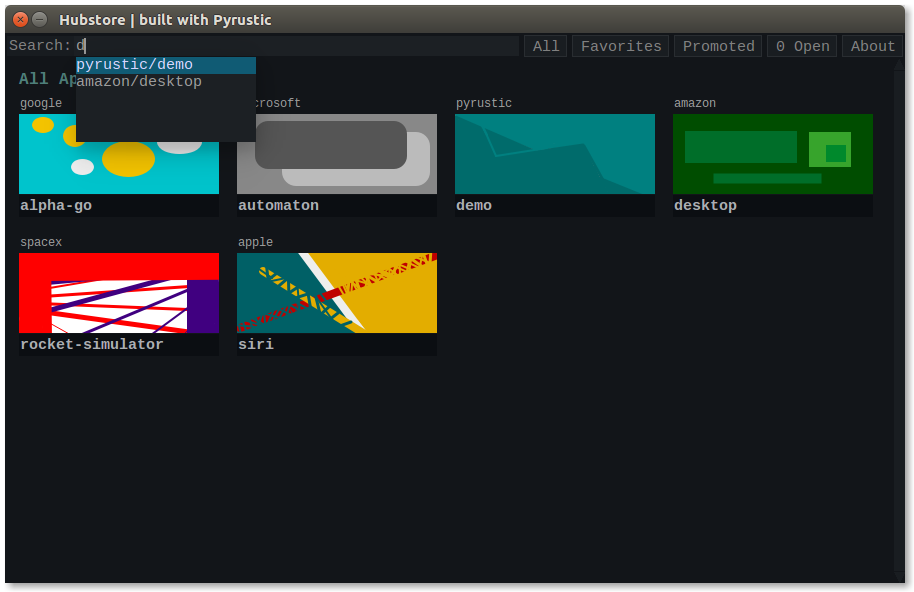
Hubstore uses Suggestion to implement the autocomplete feature
Once you have developed a Python desktop application with or without Pyrustic Framework, the next goal is to distribute it to end users.
Suppose you already have a Github profile and have already created a repository named as your project name.
To allow users to access your apps through Hubstore, you need to publish your app's distribution package (Wheel) on Github. Concretely, it is a question of doing this:
- test your project;
- create the distribution package (Wheel) of your application (the project must have a
__main__.pyentry point); - create a
Releaseon Github; - upload the
Wheelfile of your application as aRelease asset.
You can use the Backstage project management tool's build and release commands, respectively, to automate these steps. Backstage also manages the versioning of your project.
Then, the user just has to copy and paste the URL of your project's repository into Hubstore.
Hubstore assigns a default nice image to your app. You can modify the image by editing the configuration file $APP_DIR/pyrustic_data/hubstore/img.json. The image must have the following characteristics: 200x80 .PNG
To promote other apps of which you are the author or friend of the authors, modify the configuration file $APP_DIR/pyrustic_data/hubstore/promotion.json as follows:
{
"developer/app-name": "A short description",
"developer/another-app-name": "A short description"
}Hubstore is built with Pyrustic framework and is available on PyPI. As Hubstore uses the standard Python Wheel package format, it is compatible with many existing projects.
Install Hubstore in a new Python virtual environment. Open Hubstore, accept the default configuration to store data in $HOME, then just type in the search bar pyrustic/demo or copy-paste /~https://github.com/pyrustic/demo. You will be asked if you want to install the demo app. Once installed, you can run the app. You can also deliberately crash the demo app: just click the crash button. Hubstore will intercept the crash and it will offer you to report it.
If you are an old user of Hubstore, please delete/move $HOME/hubstore-apps and $HOME/PyrusticData before you open the new version of Hubstore. Yes this new version isn't compatible with the previous one.
Enjoy the demo !
If you have never installed a package from PyPI, you must install the pip tool enabling you to download and install a PyPI package. There are several methods which are described on this page.
$ pip install hubstoreI recommend even for the first time to use the next command (upgrade). Hubstore needs the latest version of its dependencies.
$ pip install hubstore --upgrade --upgrade-strategy eagerNote: this project is for early-adopters ! Work in progress...
